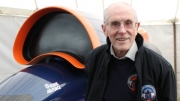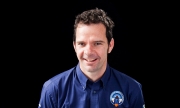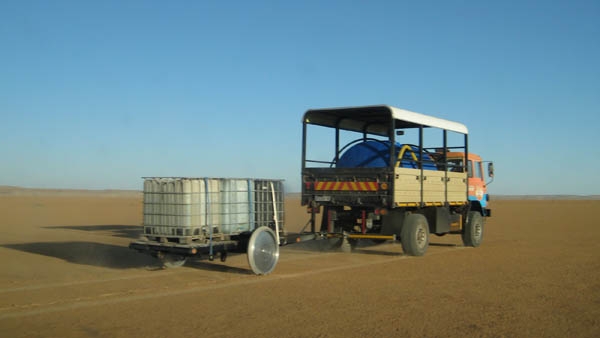
By Ron Ayers
Hakskeen is a desert that has never been used for land speed running, and the Bloodhound wheels are of a revolutionary design. How would our unique wheel profile behave on this desert? The only way to find out was to take the wheels to the desert, load them up, and tow them across the desert. That would at least give us the low speed characteristics. The high speed characteristics would need to be investigated some other time.
The idea was simple. We would make a trailer, fix the Bloodhound wheels to it, and load it up so that each wheel carried a representative weight of nearly two tons. Making a trailer in Great Britain and transporting it to South Africa would be outside of our budget, so our South African colleagues, led by Skip Margetts and Rudi Riek, offered to make a suitable trailer for us capable of carrying 3.8 tonnes, so all we needed to do was transport the wheels to be fitted to the trailer. Simple enough, you might think, but it all had to be achieved in a very great hurry so that we could conduct our desert tests before Hakskeen receives its annual soaking.
To save time, all of the main components were ‘borrowed’ from other vehicles and adapted – so those who have seen the film Mad Max will realise we why we used the name for our trailer. The wheels were supplied by Alimex, a Global Company, who have supported Bloodhound from the outset. While they have the correct profile, the wheels had been manufactured from a softer material than the real desert wheels - they were made as exemplar show wheels rather than for operational use - but they would give us a good indication of their effect on the desert.
Brian Coombs, who had designed the Bloodhound wheels, and I, flew to South Africa to conduct the trials and Rudi was an ever-present help.
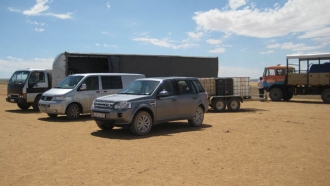 The team assembles on Hakskeen
The team assembles on Hakskeen
A great deal of work and ingenuity were required. Take a bow - Fabian Henderson, Hentie Shepard and Colin Henderson, three very dedicated and resourceful engineers. They worked literally night and day for many days to complete the task of building the trailer from available materials. Then they drove their trucks for 25 hours to get to Hakskeen Pan, and still had the energy to assemble Mad Max ready for testing. Finally, three water tanks, each capable of carrying 1000 litres of water, were strapped on. These were filled with water to achieve the total vehicle weight of 3.8 tonnes, which gave the required wheel loading. (see picture at the top of the page - Mad Max fully loaded and under tow)
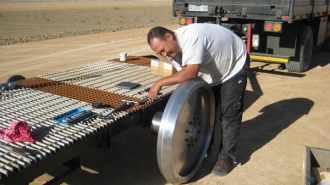 One wheel is fitted
One wheel is fitted
The trailer was offset from the towing truck so that the trailer wheels did not run in the tracks of the towing vehicle.
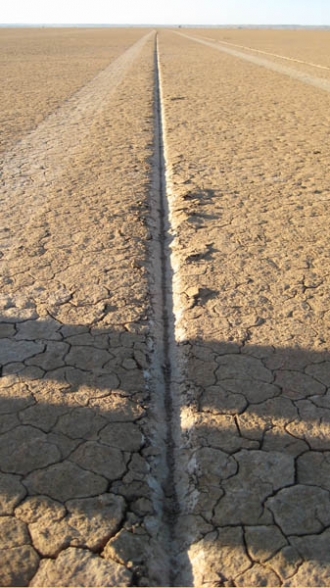 The V-groove made by a wheel, shown to perfection
The V-groove made by a wheel, shown to perfection
It was immediately clear that the desert could easily support the 1.9 tonne load from each wheel. Indeed, it was also clear that the full width of the wheel is not needed. This is very valuable information as it enables us to choose a narrower wheel profile, saving both weight and drag.
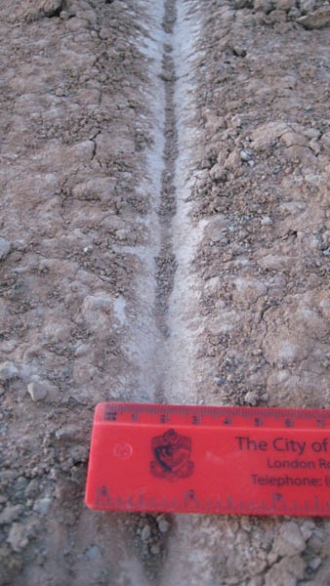 Many measurements were taken
Many measurements were taken
Other tests were carried out to determine the rolling resistance of the wheels on the desert, and on the lateral adhesion that could be achieved. Overall, we conducted a very successful series of experiments, which will significantly influence the final wheel design.
Only one problem was encountered. Namely, that the wheel surfaces suffered some damage from stones on the desert. We will be looking at that in more detail next
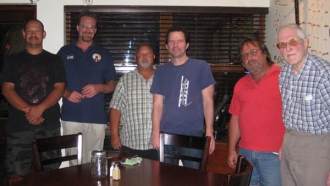 The team relaxing after a hard day at the desert.
The team relaxing after a hard day at the desert.


